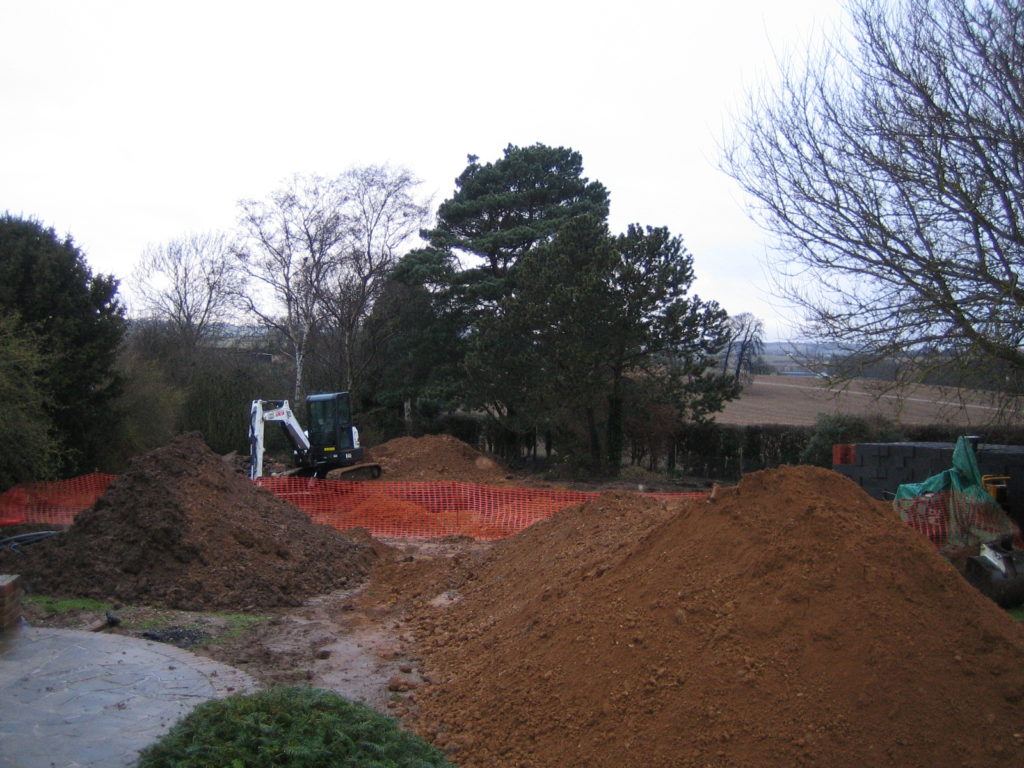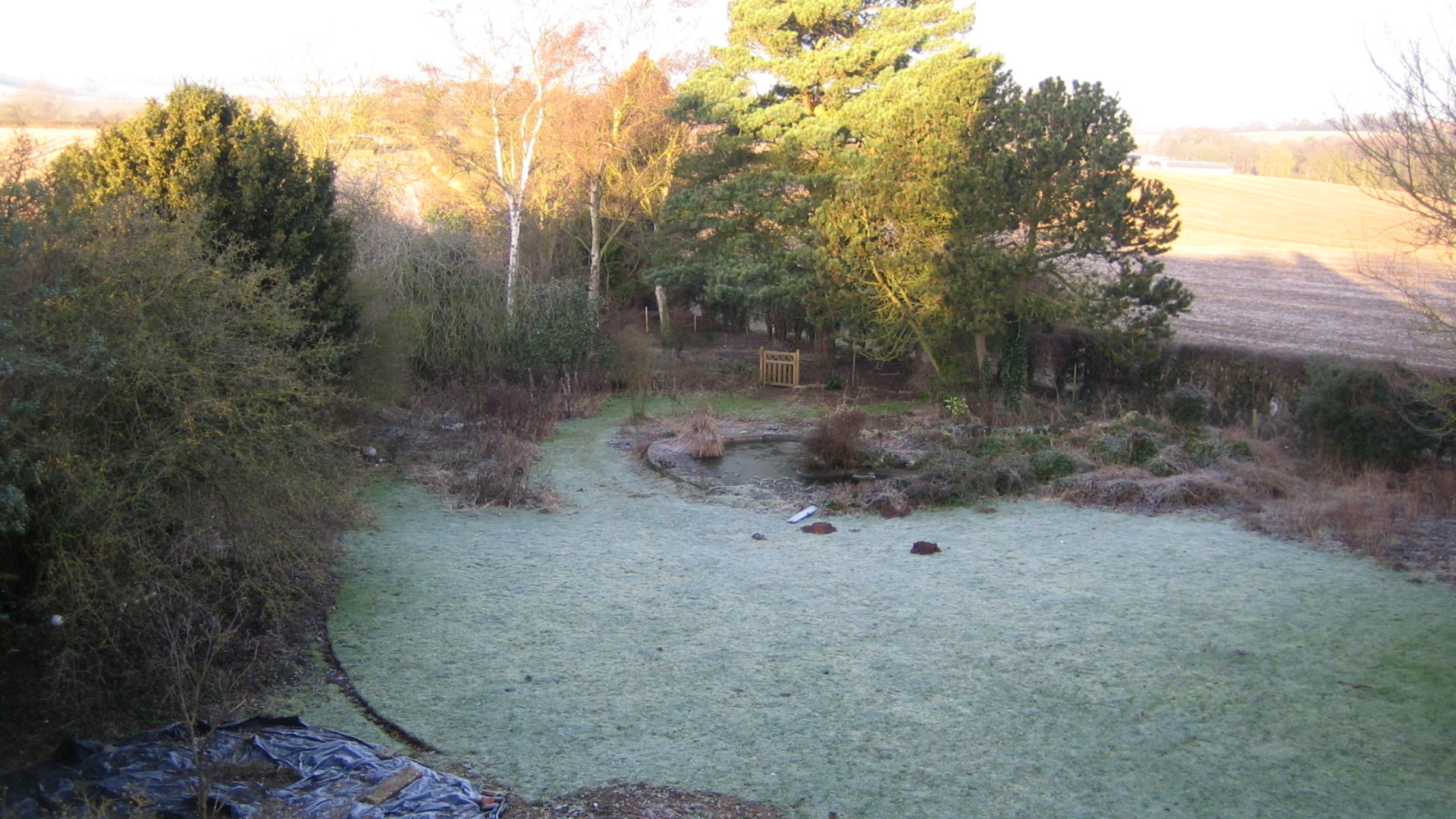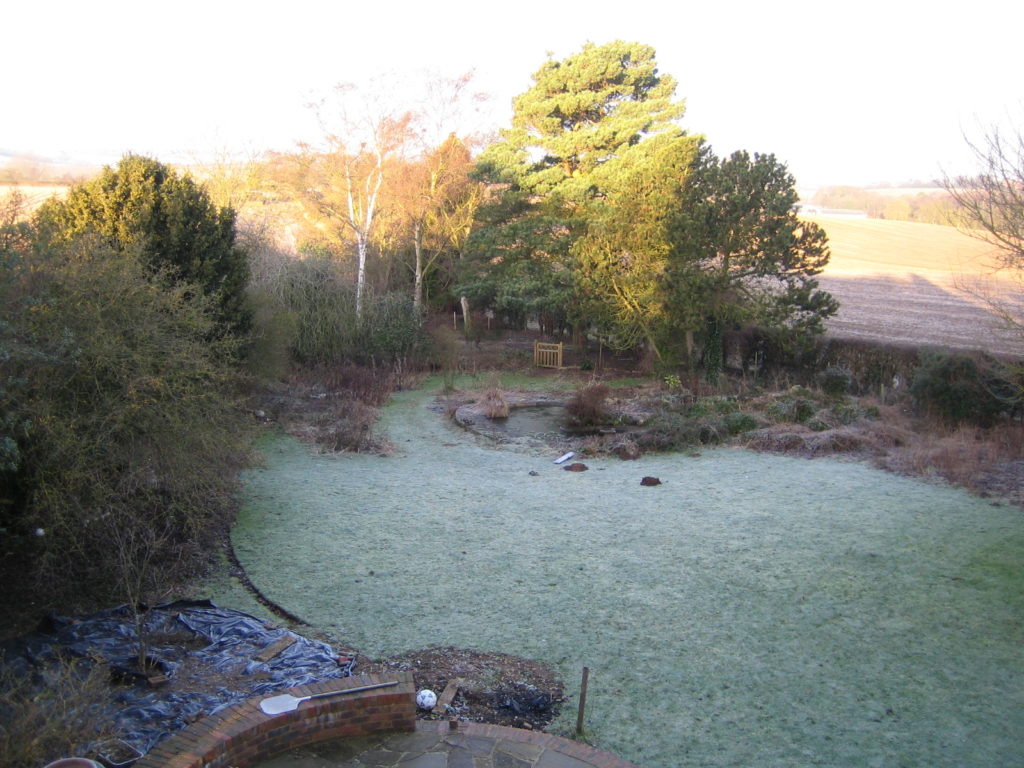After a number of requests from readers, I have relented and am keeping a blog of the construction of a swimming pond in our garden. From now on I am a client…
Sowing the seeds
We have been in the house six and a half years now. Two garden designers, two opinions, no progress. Well, not quite true. We had taken a lot of things out – conifers overgrown from the original intention twenty years ago, like cuckoos that never flew away. Delightful echoes of the past such as Choisya ternata aurea, Ribes sanguineum rosea and Potentilla fruticosa. Finally a plan starts to gel between us. It starts with a big curved border beneath the Mulberry tree. Then comes the notion of a forest garden on permaculture principles at the bottom of the garden. The fall on the lawn annoys me though, and gradually, the idea of a much larger pond between the lawn and the woodland starts to take shape in our minds. After a lot of wild sketching, we have the skeleton of a plan – a 14m by 4m swimming pond. And then unexpectedly, events intervene. A team of Bowles & Wyer’s becomes free for a few weeks. I grab them!
Germination.
With Glen Brown, our hard landscape supervisor, I pore over drawings in the office. We discuss many different ways to build it – should we use concrete blocks, in-situ cast, polystyrene formers or timber walls? Lots of lengthy conversations and long email exchanges with David Nettleton of Clear Water Revival ensue. Eventually we go for perched concrete foundations and re-inforced hollow block walls for the main pool walls and new oak sleepers for the secondary walls. Will we be able to lose all the spoil on site? (actually that remains to be seen). Will the levels work out? (that also remains to be seen) How much concrete will we need? Can we get a digger in? All the usual designer/contractor questions. Except this time it is complicated by the fact that I am Designer, contractor and client.
“How Much?!” I find myself exclaiming; “Out of the question”. A myriad of decisions that have to be taken balancing method, size, layout, materials and of course a mass of technical details. One novel feature is that we only have to do technical drawings – no visuals or coloured presentation plans to convince a client!
Finally, a date is set for starting on site, even though we have not yet bottomed out all the costs or details. Not exactly seat of the pants, but not quite comfortable either. On a frosty Friday in early February, the team arrive. First day is just preparation – hand clearance, draining the existing pond, making sure the route for the excavator is clear.
On the Saturday, I let our (four) ducks out as normal. three of them are Indian Runners, and true to form, they go tearing across the lawn towards the pond. Their eye level is quite low, so they don’t see that their pond has been drained until they get within a metre or two. They stop in amazement. I can almost hear the duck voices saying – “What the…where…I’m sure it was there yesterday….!” They wander back up the lawn, confused and disorientated. They will have to wait a long time for the new pond to be finished, but it will be worth it!
Week One – green shoots.
The 5 tonne digger arrives. after a quarter of a mile trek down the bridleway and a sharp 270 degree turn through the fence at the bottom of the garden, we are in! Work proceeds quickly – the lawn gets stripped, topsoil is scraped off and piled up separately. We rapidly get down into gingery coloured gravel subsoil and at the bottom of the excavation is a fine amber coloured sand layer, very free draining. By the end of Wednesday we have the bulk of the main excavation out. As a result, most of the garden is covered in large piles of soil.  My 15 year old son asks me where this is all going to go. I furiously check my cut and fill calculations, cross my fingers and say airily that it will all get used up back-filling and making up the levels. Perhaps if we fill our pockets every day, like the great escape and walk around outside in little circles…
My 15 year old son asks me where this is all going to go. I furiously check my cut and fill calculations, cross my fingers and say airily that it will all get used up back-filling and making up the levels. Perhaps if we fill our pockets every day, like the great escape and walk around outside in little circles…
Meanwhile, I am trying to sort out the final details with David Nettleton. PVC, Butyl or Polypropylene liner? Welded on site or off site? Do we need an Iron Reactor? As David explains: “This unit is not entirely necessary and could be added later. It’s a unit for emergencies; if the pond gets enriched with phosphorous or somehow you get a spike that encourages algae it will release Fe3+ ions into the pool to capture Phosphate Ions and precipitate them out. Very clever stuff!”. However having had our water tested, it is apparently ‘very good quality’ (which is reassuring), so for the time being we are passing on the Iron Reactor. We may live to regret it. For the liner, it is a choice between a whole roll of Polypropylene made in the UK, of which we will use about half, or the much less environmentally friendly PVC which comes from Germany. Both are expensive (client in me speaking there) so we plump for the UK made, environment-friendly product. Friday is spent making finishing the excavation of the main pool and making everything safe. By tomorrow, we will all breathe a sigh of relief and I will not be alone in wondering where my garden has gone. On Monday, it will start all over again.
Now I know how my clients feel!
More next week…


